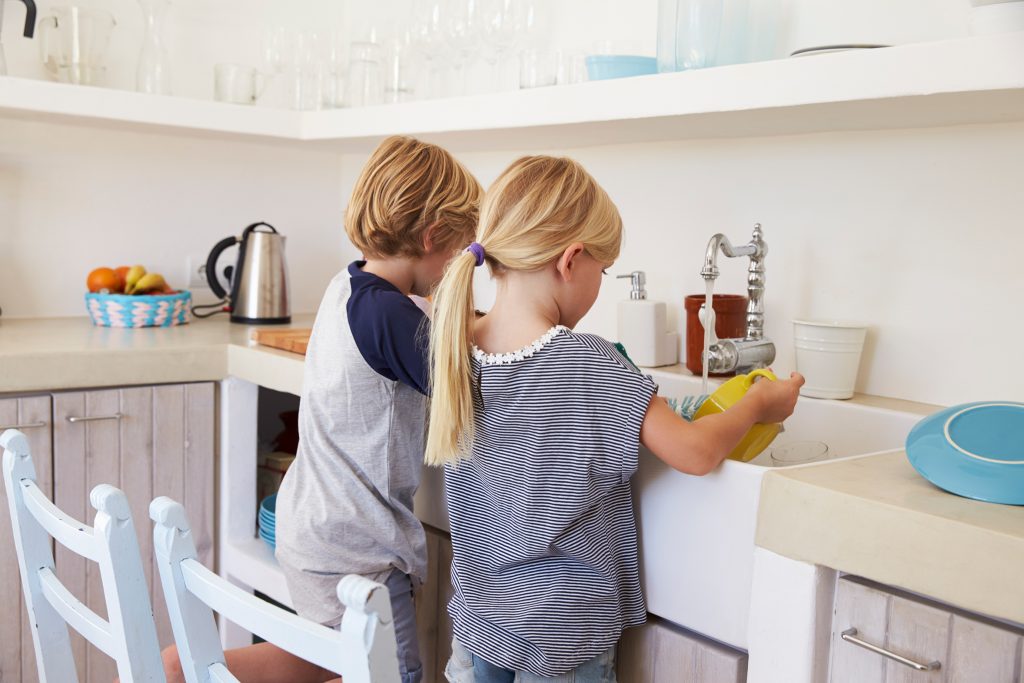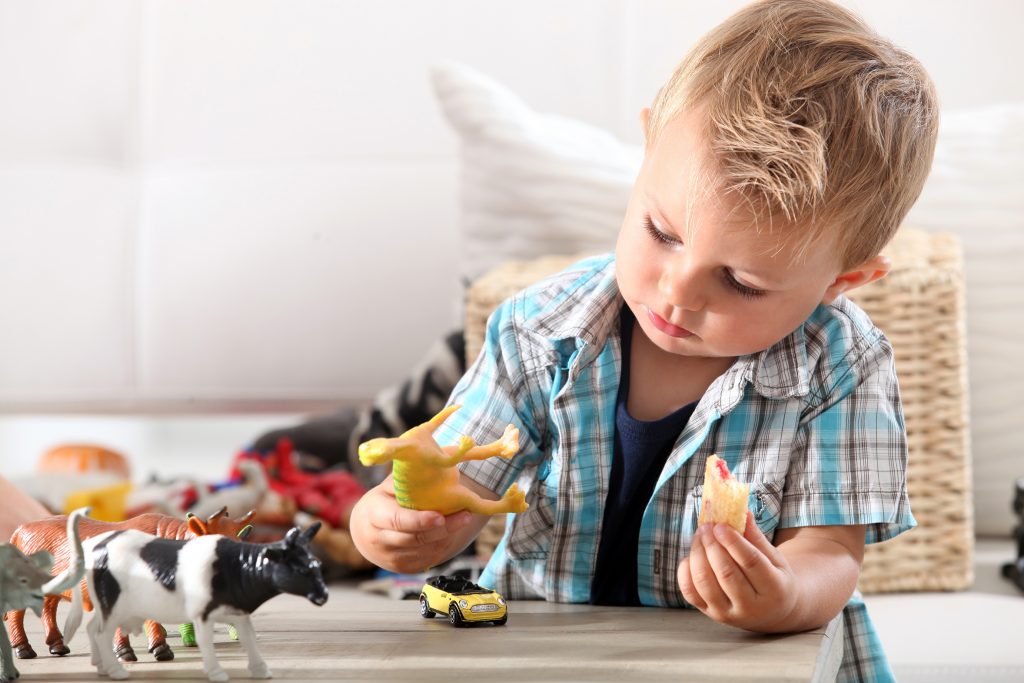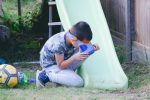What activities will stimulate my child at home?
We all want the very best for our little ones, but this can sometimes feel out of reach, especially under the current circumstances.
During COVID-19, and any other period at home for that matter, it can be all too easy to point the finger at the parents and feel guilty for not giving your child the best experience possible. Having said that, you would be extremely surprised to understand how much your child will learn from you at home, simply through watching and listening to new tasks.
Most schools have closed their doors during this period, but that shouldn’t stop you. The internet holds a plethora of resources, both free and paid, offering parents timetabled activities to do with their children. The amount of information available can be overwhelming, as well as the thought of having to homeschool your children, especially if you are not confident in your own skills, but there are so many quick tips to follow that will make a huge difference. So while they’re at home for the next 12 weeks or so, let’s do the best we can to maintain their learning and routine.
We’ve done some of the hard work for you and sourced some of the best tips, tricks, activities and routines to follow to help you and your little ones get through this time.
Where To Start?
While you’ve probably got plenty of stationery and equipment at home to get you started, it’s not a bad idea to stock up on some essentials or choose some new practical resources to keep your activities engaging. A number of schools and organisations are shifting their focus to provide online materials, and this can be anything from print outs to ideas for arts and crafts or even music – there are plenty of freebies to get your hands on. We recommend checking out Wandsworth Preschool and Winchmore Hill preschool for online music lessons, books to read with your children and great foodie activities.
Our Top Activities
Washing dishes

This may sound like child slavery, but we assure you there are ways to make this fun! Children love to participate in almost everything. Through this learning experience, we want to
Resources:
- a selection of sponges, cloths and brushes, washing-up liquid/soap;
- a stool or chair to stand on;
- a variety of pots, pans and utensils.
Intent:
Encourage the children to play in the sink (water tray) to promote a multi-sensory experience which allows them to explore mathematical and scientific concepts. It also enhances physical development and is a rich language experience.
Sensory play with jelly
Resources:
- Jelly (you can buy sugar-free, vegan jelly)
- Tray or dish to put the jelly inside
- Optional: add toys such as Lego, animals, fairies, cars etc
- Alternatively, if you do not want children to directly touch the jelly, place in Ziplock/ sandwich bags.
- Extend: add tools for them to explore, tweezers are good for fine motor skills
Intent:
To have a sensory exploration with jelly using touch and smell to explore hidden toys. Tools enable gross and fine motor skills to develop, this, in turn, will allow children to be secure when they get older, for example, to support muscles in your hand to hold a pencil and write.
Implementation:
Make the jelly according to packet instructions. Toddlers can help measure and mix the solutions together with support (be careful of hot water). Add any toys you want them to explore inside the jelly. Then transport into smaller containers or one big dish and set in the fridge until it is hard. Once it has set empty the containers into a dish or let the children explore the jelly. We suggest putting down towels/ newspaper to avoid messing up carpets.
Keywords and Language:
Jelly, squidgy, soft, melting, mixing, colour, jiggly, wobbly.
Dinosaur fossil hunting

Resources:
- 1 cup of salt
- 1 cup of flour
- 1/2 cup of warm water
- Dinosaur toys
Intent:
To learn about dinosaurs, where they come from, that they don’t exist anymore, how people still find pieces of them.
Implementation:
Combine flour and salt together in a medium-sized bowl. Then, add water and mix. Knead with your hands until you have a ball of dough.
After making dough, roll out a small ball and press down with the palm of your hand. Have the child press small dinosaurs into the dough, but gently enough that the dinosaur does not go all the way through the dough.
Remove the dinosaur after pressing to reveal a “dinosaur fossil.” Bake in a 350-degree oven until the dough starts to turn brown. This may take 30-60 minutes depending on the size and the thickness of the dough.
Keywords and Language:
Dough, knead, ball, soft, squidgy, dinosaur, press, fossil.
For other great activity inspiration, check out the Wandsworth Nursery Home curriculum and the Winchmore Hill Preschool Home Learning centre.
![[AD] We went to the newly opened Cha Sha Kingston a couple of weeks ago, and wow — taste bud adventure unlocked! The boys devoured the masala fries and chicken tikka rolls, while we couldn’t get enough of that epic kebab butter curry 😍🍛.
It’s amazing value for food this tasty (and everyone left happy and VERY full!).
Delicious food, vibrant vibes and incredible value — the perfect combo for your next meal.
📍Cha Sha Kingston
43 Surbiton Road, KT1 2HG
🌐 chasha.co.uk
Other Cha Sha locations in Birmingham, Ilford, Southampton and Wembkey
#ChaSha #ChaShaKingston #KingstonEats #FoodieFinds #UKFoodie #FoodReview #KingstonUponThames #FamilyEats #FamilyDining #FoodieKids](https://suburban-mum.com/wp-content/uploads/2016/02/574770541_18560351146016840_6855048070839528040_n-180x320.jpg)

![[AD] We’re a cricket-mad family, so we’re buzzing that @thehundred is back this August! 🏏🔥
To get ready, M tried out the official FREE Activity Pack — and it’s brilliant! 🙌
Packed with fun games, creative challenges and sporty tasks, it’s perfect for getting kids hyped whether you’re at home or on the go.
👉Download yours now (link in bio)
@londonspirit @ovalinvincibles #EveryMomentCounts #TheHundred
#EnglandCricket #CricketFamily #TheHundredCricket #LondonBloggers #Cricket #CricketIsLife #kidsfun](https://suburban-mum.com/wp-content/uploads/2022/11/505472555_18531279601016840_7092520074819907569_n-180x320.jpg)



![[AD - Press visit]
We enjoyed the glorious sunshine this weekend with a trip to Brighton. We went on the @brightoni360official which is right by the sea front.
The i360 pod take a slow journey up, allowing you to take in views across Brighton and the South Downs 450ft above ground. There’s a bar inside with drinks and snacks available to purchase and the experience lasts 25 minutes.
Afterwards, we headed to the open air roller rink for a roller skating session!
The roller rink is:
⭐ Suitable for over 5s
⭐ £6.50 if you have your own skates or £9.50 if you need to hire them
⭐ 45 minutes per session
Full details to visit the i360 + skating
📍 Brighton i360, Lower Kings Road, Brighton BN1 2LN
🚗 Parking nearby (we parked in the Regency Square Car park)
🎟️ Prices start from £25.40 for an adult and £16.90 for a child
🕐 Opening hours are currently Sun-Fri 10.30am-18.30pm and until 19.30pm on Saturdays
☕️ Bar inside the i360, cafe and gift shop
Book tickets here:
https://tickets.brightoni360.co.uk/tickets/?_ga=2.195305772.1869001490.1689671753-1757164059.1689671753/#events?eventid=157](https://suburban-mum.com/wp-content/uploads/2015/04/417980235_313576471048632_3682382982231216432_n.jpg)

![[AD] ***Summer of fun at Barracudas Activity Camps!****
There is plenty for kids to do at @barracudas_activity_day_camps
From Tennis, Archery, Swimming, Motor Sports and more you can be sure that there will be something for kids aged 4.5-14. ⚽🏈🥅🎾🏓🏎️🏹🏊♂️🏉
You can book on a day by day basis - so it can fit in with any other days out/activities you have planned and there are early drop off and late pickup options available. Barracudas are also Ofsted registered so you can use your Childcare Vouchers too.
⭐⭐⭐Get £20 off a week or £4 off a day using my discount code: MARIA20⭐⭐⭐
#BarracudasActivityDayCamp #BarracudasActivityCamp #BarracudaAmbassadors #SummerHolidays #SchoolHolidays #Summer2023 #SummerCamp #DayCare #Camp #KidsCamp #surreymummy #surreymums #SummerOfFun #ActivityCamps #HolidayCamps #Childcare #SchoolHolidays #schoolholidaycamps](https://suburban-mum.com/wp-content/uploads/2024/07/353583570_625625966167953_545896259645102575_n.jpg)



![[AD] We have some super exciting news...we have been chosen to be Laser Quest Ambassadors, and the boys are over the moon!
We are really lucky that our local Laser Quest (@laserquestkingston) is just around the corner from us. It means we can pop in of a weekend or anytime during the school holidays, and with summer just around the corner, I know Laser Quest will be one of our go-to places for some family fun.
As well as games of Laser Quest, there are also VR experiences and arcade amusements too. To find out a bit more about how Laser Quest works, you can read my blog post: https://www.suburban-mum.com/laser-quest-kingston/ (clickable link in bio)
Don't forget to keep an eye out for our Laser Quest posts - I'm going to be giving away two family passes to use at Laserquest Kingston!
If you can't wait and want to head down to Laser Quest to try it out, use the code SUMMER30 for 30% off your booking. The code is valid from now until the end of August 2023 and can be used on Laser Quest games and birthday party bookings.
#LaserquestAmbassador #Laserquest #LaserquestKingston #ActivitiesForKids #FamilyFun #DaysOutWithKids #Lasertag #LaserquestVR #Kingston #ThingsToDoInKingston #SurreyFamilyDaysOut #ThingsToDoWithKids #RainyDayFun #SurreyMummy #SurreyLife #LifeWithKids #LifeWithBoys #familyfunday](https://suburban-mum.com/wp-content/uploads/2015/04/353230107_797358078406942_2405522556733455165_n.jpg)

![[AD] The sun has finally made an appearance and the boys have been making the most of it by spending it
in the garden.
They’re go-to is always football and they’ve been trying to improve their aim and accuracy with the new Messi Foldable Footlball goal from the #MessiTrainingSystem range.
I love the fact the goal is foldable, making it easy to store away when not in use. It is also lightweight so you can effortlessly pack it up and take it to the park or to a friend’s house.
The Messi Foldable Football Goal retails at £36 and can be purchased from @argos
You can read my full review here: https://www.suburban-mum.com/messi-foldable-football-goal/
#TrainLikeMessi #FoldableFootballGoal #FootballSkills #OutdoorFun #LionelMessi #LeoMessi #FootballAtHome #OutdoorKids #JustGetOutside #OutdoorsAndFree #ScreenFreeKids #WhateverTheWeatherKids @flair_gp](https://suburban-mum.com/wp-content/uploads/2024/07/341194882_615024710178056_41977149395989448_n.jpg)

![[AD] We are absolutely thrilled to announce that we are Barracuda Ambassadors again this year.
With Easter just around the corner, the boys were sent the @barracudas_activity_day_camps new camp kit in preparation for the school holidays.
There’s a wide range of activities for kids aged 4.5 - 14 including Tennis, Archery, Basketball, Arts & Crafts and more.
If you like the sound of Barracudas, find out more over on their website. You can also save £20 a week or £4 a day, using my discount code: MARIA20](https://suburban-mum.com/wp-content/uploads/2015/04/336812306_765234558514317_685553691647241974_n.jpg)


![[AD - Gifted]
Last weekend we were invited to try out @tsarettaspice’s new Bottomless Brunch menu and I can tell you it was thumbs up all round!
There’s a good choice tapas on offer from Punjabi fish fingers, Indo Chinese Chicken to Spiced Lamb Scotch Eggs and Manchurian Cauliflower (which was amazing!)
If you’re local to Twickenham and fancy giving them a try here’s are the details.
Tsaretta Spice Bottomless Brunch
⭐️£37.50 per head for bottomless Prosecco or cocktail of the day
⭐️£55 per head for bottomless Champagne
⭐️ Food included: 4 tapas selections and dessert or 2 tapas selections, a pav or naanwich and dessert
⭐️ Non-alcohol brunch is also available
Tsaretta Spice
55 Church Street
Twickenham
TW1 3NR
You can also read our full review over on the blog (link in bio)](https://suburban-mum.com/wp-content/uploads/2015/04/334565436_5960402314015030_663031098700829518_n.jpg)



